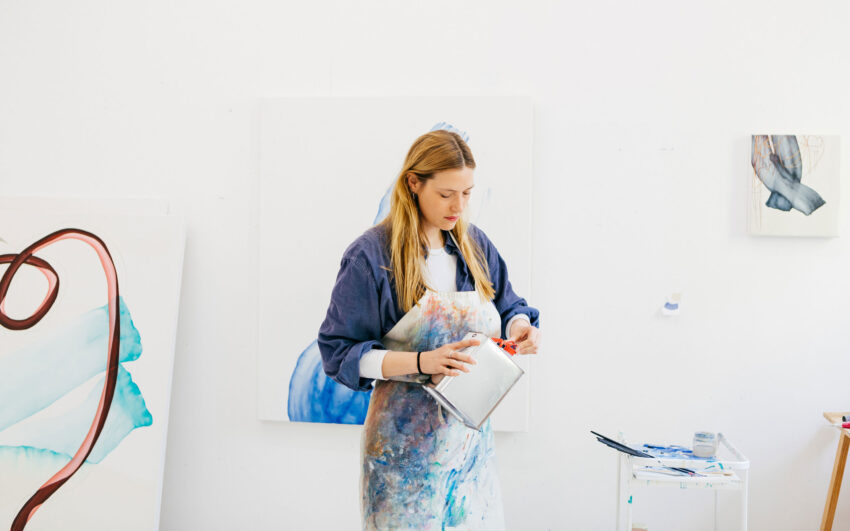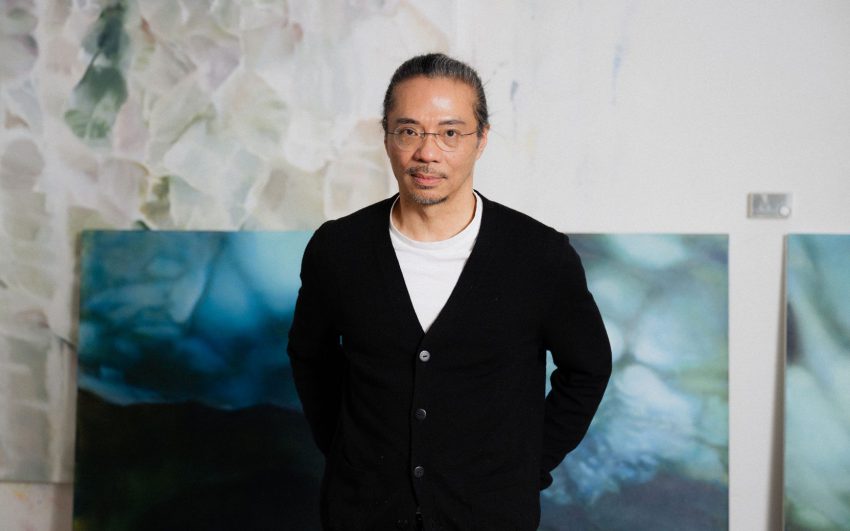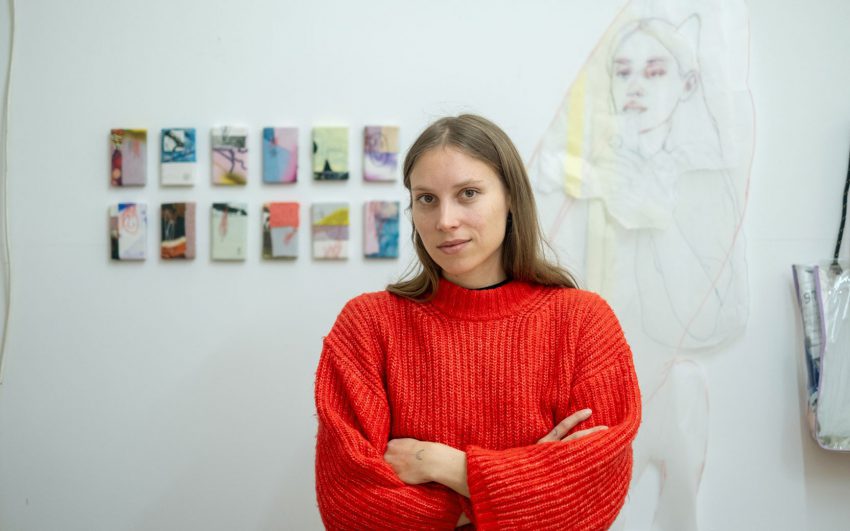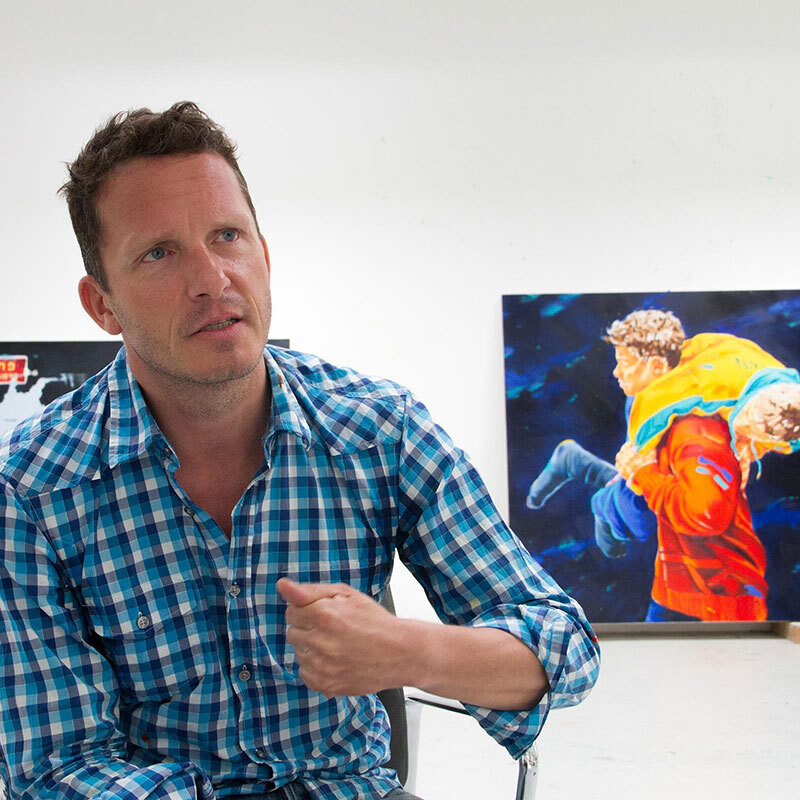Typically, art and science do not coincide, but rather complement each other. Nikolaus Gansterer succeeds in bringing these two seemingly juxtaposed positions together. In his work, he focuses on mapping processes which emerge out of cultural and scientific networks, unfolding their immanent structures of interconnectedness, and exploring the links between drawing, thinking and action. We met Nikolaus in his studio in the midst of the Viennese Prater to understand why he collects traces of places and ephemeral conditions, and how he enables some of them to draw themselves.
Nikolaus, looking at your works, they appear scientific – almost like astrophysical drawings or notes on relativity theory.
Yes, there is something to that. I consider scientific principles as quite fascinating. We live in a highly complex world. Science is just one sign system and explanation model among others. I pick a system and elaborate on it. Just as important to me is the reciprocal, often paradoxical penetration of micro and macro levels into these various systems. In turn, I try to meet these complex live realities with complexity as well.
Does your work claim to be scientific in the sense of the scrutiny of precise scientific observations? Or are you purely concerned with aesthetic considerations?
Primarily, I don’t see an incompatibility between the two! Aesthetics derives from the Greek “aisthesis”. Basically, it concerns conscious perception derived from the intellect and the senses. A sense of discernment, it’s fundamentally concerned with the ability to observe, explore and research the world with “good sense”. Literally sensuous connections result in the form of new knowledge. From this perspective, so-called non-sense may make just as must sense! (laughs) It’s principally about differentiated experience as an elementary possibility in the creation of knowledge.
As an artist, I strive to work authentically in order to explore these forms of thinking, feeling, and knowing. For me personally, an extended drawing practice plays a central role, not so much in order to mimetically depict and explain the world, thus making it more controllable, but rather to make phenomena - things and the relationships between them that are not initially obvious - visible, and as precisely as possible, for both myself, and others. The “beautiful”, which is often confused with aesthetics in the sense of its original meaning, leads to “beautiful art” on white walls which rather bores me.
How would you in your own words explain your artistic work?
My work processes are concerned with a fundamental investigation into perception processes and visualization strategies concerning temporal and dynamic presences –especially in the search for new forms of translation. Therefore I examine various sign systems to access their suitability for transfer to a new environment in which they may be charged with new meaning. My work therefore, is not so much about things as such, but about their interrelationship, that is, the relational space between them.
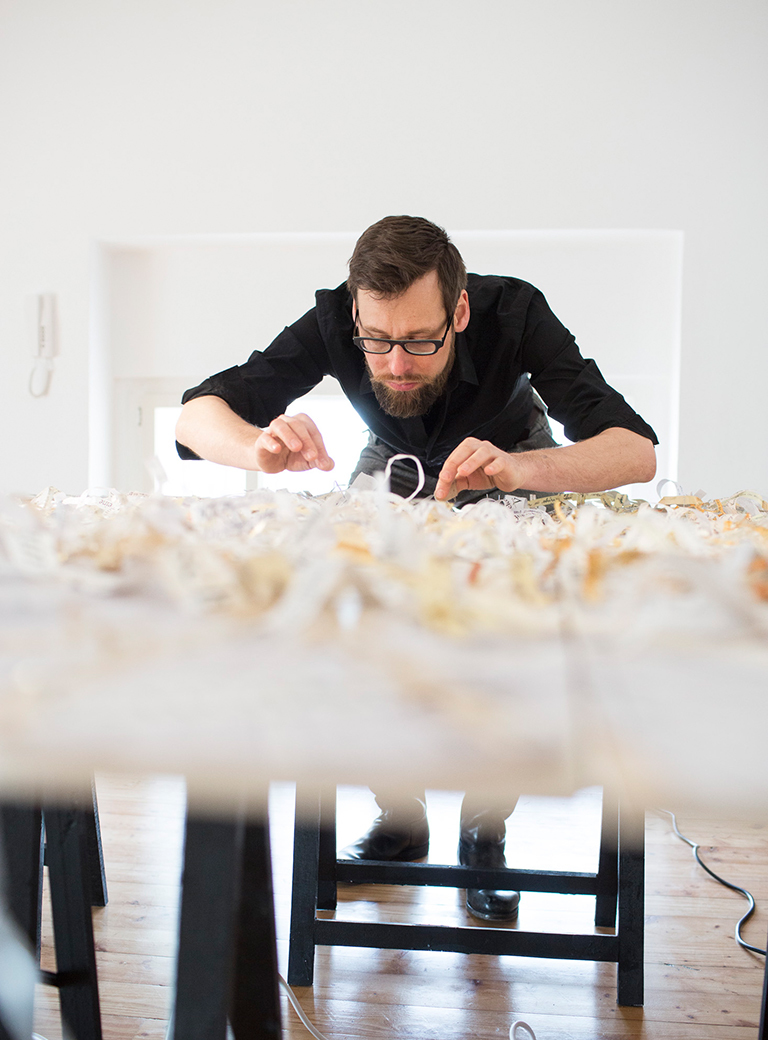
What exactly do you mean by temporal and dynamic presences?
My work is focused on the search for an open form! By temporal and dynamic presences I mean those procedural processes that occur between the world of things, the environment, and the viewer. This follows a phenomenological approach. How can something be recorded and materialized that is in itself, quite ephemeral, constantly evading being shaped, its a continuous balancing act.
For example, I created a mapping project in Damascus where I drew an alternative city map based on personal experiences, observations, and recollections. In the case of Mapping the Terminal I charted the psychogeography of airports for over a year. Works such as these find a theme in the immanent process of temporal shaping and its resolution. It follows that my intense interest in diagrams, cartography, and notation systems in all dimensions indicate an intensive preoccupation (on my part) with performance.
In some cases, like “Traces of Spaces”, you built a quite idiosyncratic arrangement of apparatus and measuring instruments to materialize space by means of a helium balloon with an attached pencil, which documented air currents within a building.
In my work I focus basically on translation processes, the “apparatus” as a means to document how one reality can be transferred into another. Drawing is very suitable because the process of transference has an immediacy and requires little technical effort.
And these measuring instruments and recordings are they also part of the exhibited work?
Precisely. There is little mumbo jumbo in my works. Conscious disclosure of the means of production! The instruments, which you refer to are analog models for this permanently occurring auto-poetic process.
Invisible powers so-to-speak make themselves visible and you provide the context.
I ask myself the question: Am I able to create a kind of self-recording system in which a place or situation depicts and records itself at a specific moment. In recent years, I have spent a lot of time exploring the sensitization of my own senses and in developing ad hoc performative diagrams, so-called Translectures.
You mentioned performance as part of your work. Where is the reference?
In performance art, presence is the basic building material or measuring instrument of these forces conducted simultaneously. Which forces have an effect in a place and which spaces are constituted in the process?
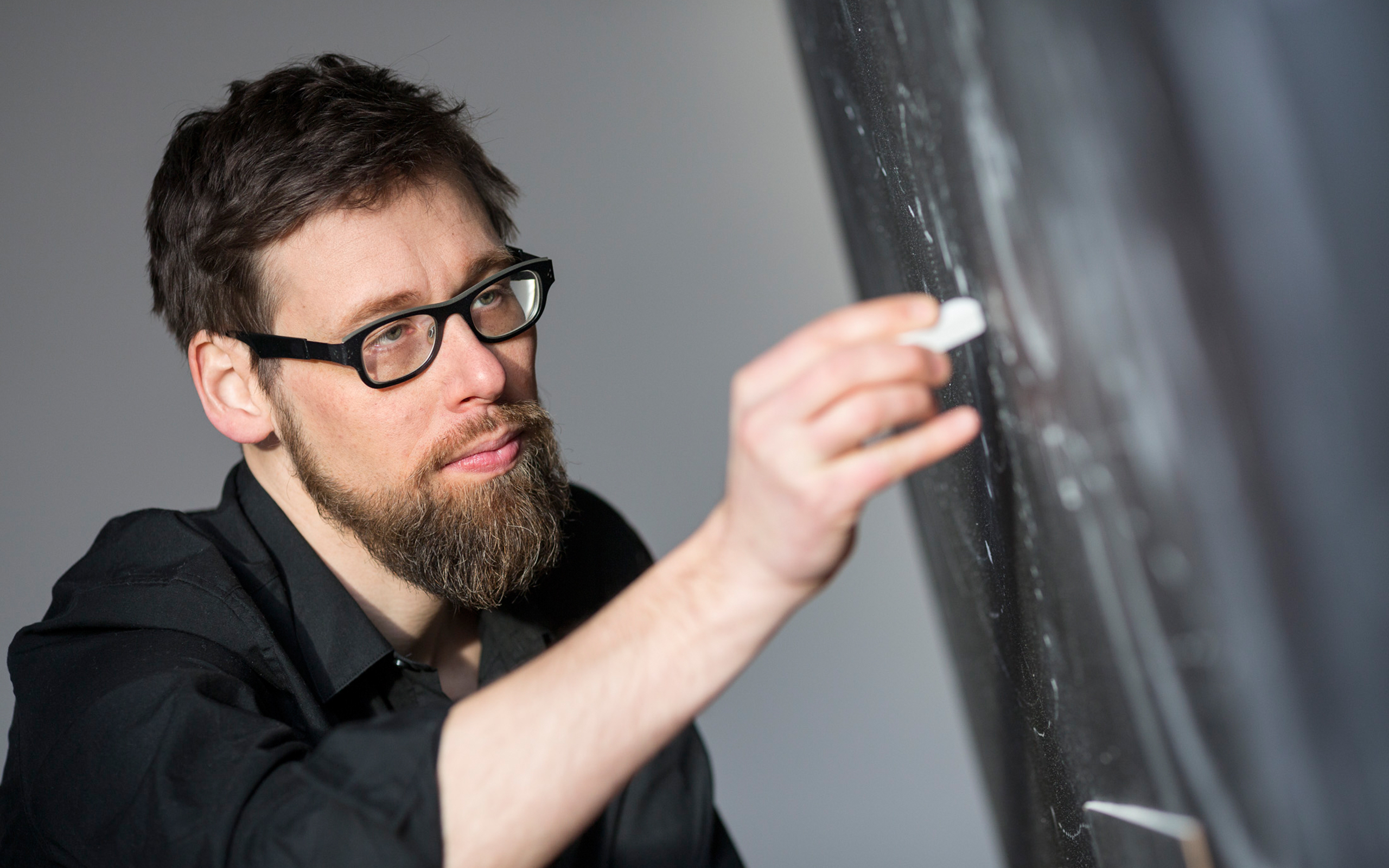
Ideally, what would you like your artistic work to inspire?
I would wish that seeing and thinking attitudes are questioned and that different patterns of action will become accessible, perhaps even change…
Listening to you I can’t help thinking of Daniel Kehlmann’s novel “Measuring the World”...
... or even the impossibility of measuring the world! (laughs) Drawing as a medium has interested me for a long time, especially mind-maps and diagrams – all of the mutual interdependencies between so-called interior and exterior spaces. The exciting question is: How do I measure places and non-places? Which language or drawing system do I need to develop for it? And how in turn does the space change me? The extensive assumption of objectivity has long become obsolete.
How do you approach a new work? Is there, as in a scientific test series, a fixed sequential process that you always run through?
No, there is no fixed process, it occurs rather as in free association, often during drawing or experimenting without knowing what will result. Inspiration often happens only by chance! Meanwhile, I have developed a vocabulary and form language that I can rely on. It is rather about a form of emptying in order to let something new develop. To be able to allow this situation sometimes takes time…
You spent some years in Brigitte Kowanz’s class at the “Applied” [Academy of Applied Arts Vienna]. In what way has her approach to “space” influenced your own concepts?
Lastingly. Through her intensive study of the phenomenon of light and its incomprehensible yet as we all know essential sensibility and atmospheric power, a wide artistic field of action has opened up for me. Space had never been communicated as a static entity but rather as a dynamic transmedial field, that has certainly generated an immediate political dimension. I have right from the beginning simultaneously concentrated on installation, music composition, improvisation, and choreography – all strategies intended to temporarily organize space and time.
What role does your studio play for you and your work? Is it a creative place or rather a kind of laboratory?
The studio is a place where things can develop a life of their own, where the works grow, are allowed to find their own form. I conceptualize many works when I travel, in collaborations, and during residencies.
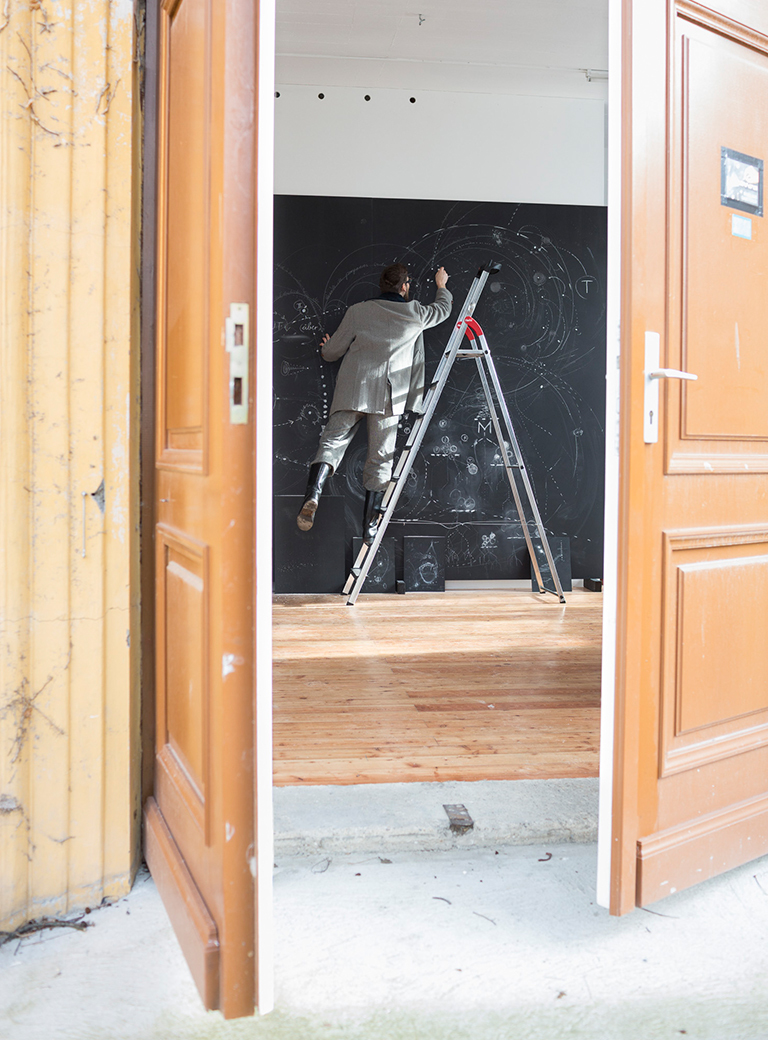
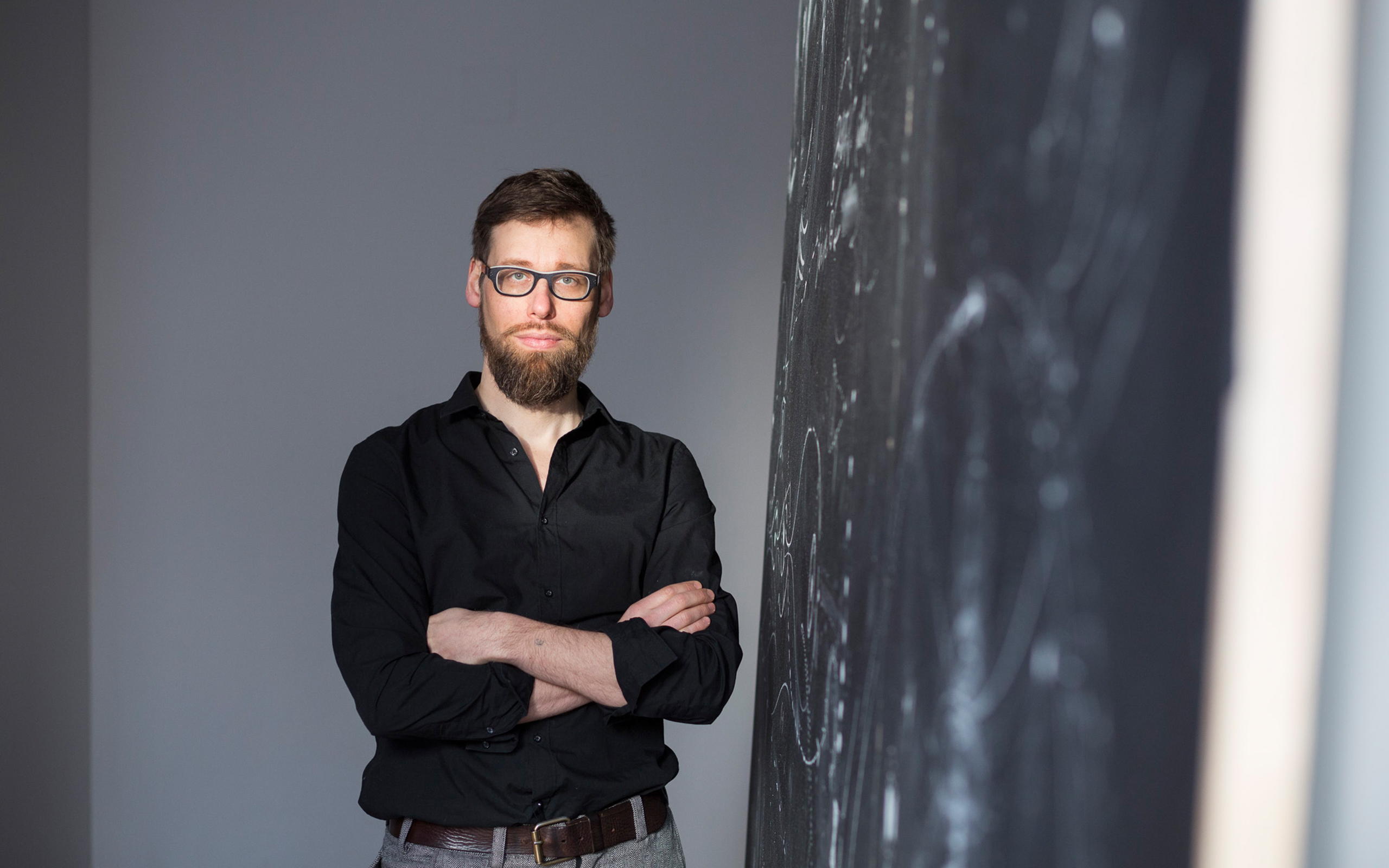
You live and work in Vienna. For some years now, the city has developed into an international art metropolis. Why do you think that is?
Vienna simply is a very liveable city in one of the most exciting geopolitical locations. A fairly well functioning system of cultural public art funding is still in existence here. There are two art universities and an interesting cross section of art institutions; parallel to this a higher density of off-spaces has developed in recent years. All that is humus for the arts.
Is that the reason why you decided to live and work in Vienna?
During my years of travel I lived in various cities in the Netherlands and Belgium. Ultimately, I landed like many people in Berlin. Quite inadvertently, I returned to Vienna and felt immediately at home again. Distances are short, rents are still affordable, interest in the arts is great…
You just mentioned your “travel years”. Once it was the rule that journeymen of various trades learned new work practices and collected life experience during their “years of wandering”. How did you develop during your stations?
I think it is very important for both one’s personal and artistic development. Today eighteen-year-old students come to my seminars – that’s right after they complete high school. Many works are similar. I believe a reservoir of the most varied life experiences determines the depth of a work making it unique.
What exciting things are programmed for this year?
De Gruyter has recently published the second edition of my first comprehensive book on diagrams under the title Drawing a Hypothesis as well as another comprehensive publication entitled Choreo-graphic Figures that introduces a unique notation system for performances at the interface between choreography, writing, and drawing. For the release, there will be a series of performative presentations. During the summer, I’ll work intensively on a new animated film in my studio in the Viennese Prater. This will be followed in the fall by exhibition projects with Urbane Künste Ruhr near Düsseldorf, a residency, and the preparation of an exhibition at Villa Arson in Nice as well as at Wiels, in Brussels.
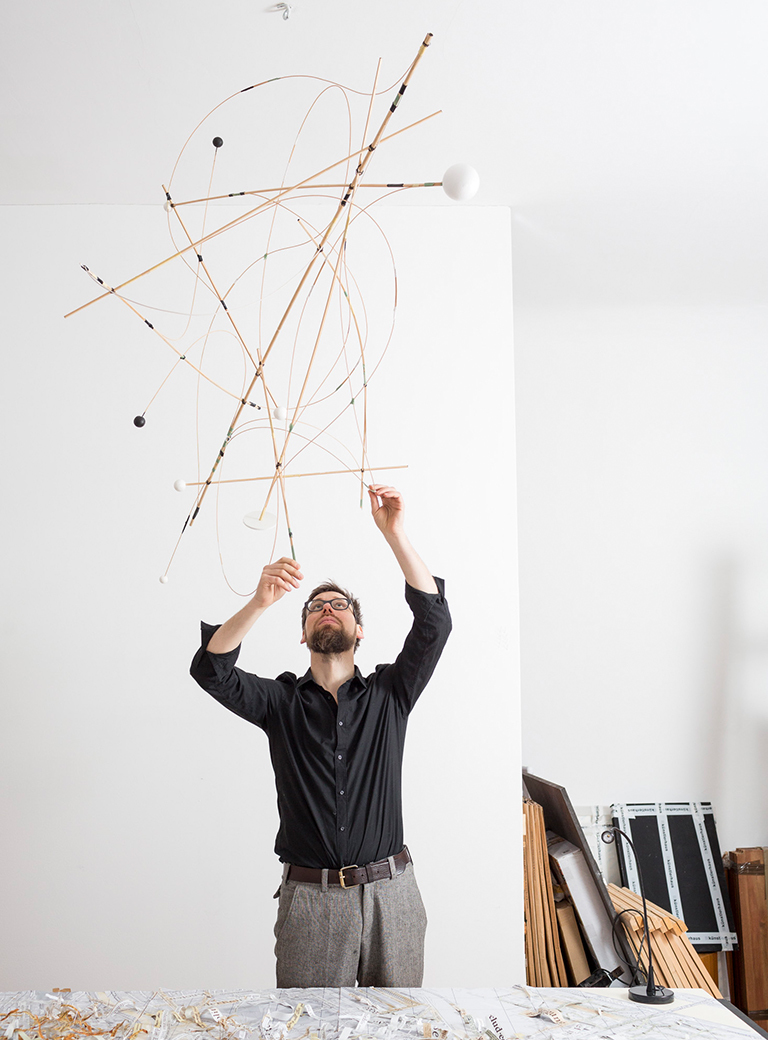
Interview: Florian Langhammer
Photos: Eva Kelety


